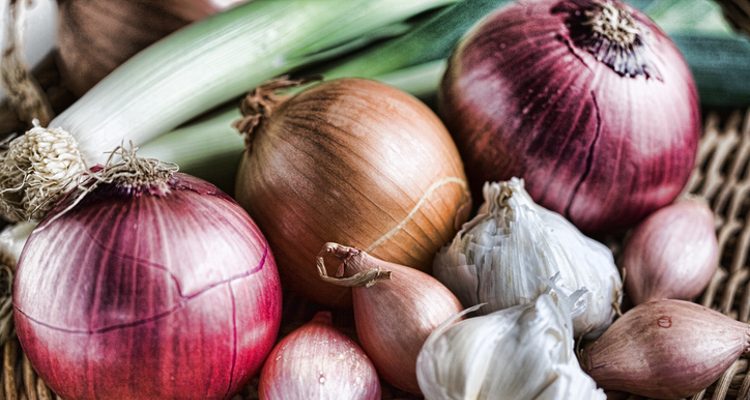
Sulfur is an element you don’t usually associate with food. It’s something you associate with matches or bad smells. But sulfur is not only found in various foods; it’s also good for you.
In the past few years, there has been a swelling of interest in foods that are high in sulfur. But given that sulfur-rich foods are still not widely known, you may need a little bit more information before adding these foods to your diet.
Which foods are high in sulfur? How do high-sulfur foods benefit you and your health? In this article, we lay out what foods are high-sulfur foods, what the benefits of sulfur-rich foods are, and drawbacks or side effects of these foods.
Sulfur-Rich Foods
| Fruits | While not all fruits have sulfur in them, there are a few. Bananas, tomatoes, watermelons, and coconuts are all sulfur-containing foods and easily found at most grocery stores. |
|---|---|
| Vegetables | Many vegetables have sulfur or sulfur-containing nutrients in them. These vegetables include parsley, kale, bok choy, watercress, collard greens, mustard, Brussels sprouts, split peas, sweet potato, turnips, asparagus, avocados, and spinach. These veggies are also great for fiber, vitamins, and a number of nutrients that are great for you.
Also high in the sulfur content are vegetables like shallots, garlic, onions, leeks, chives and other bulb vegetables. These veggies tend to be good sources of sulfur as well as having nutrients that can help with blood clots and cholesterol. |
| Dairy | Many dairy products like cheese, milk, and sour cream contain sulfur in suitable amounts. |
| Meat | Most meats are great sources of sulfur. Beef, chicken, and fish in particular have high levels of sulfur. |
| Legumes | Many legumes are sulfur providers as well. Lentils, dried beans, soy beans, and soybean products like tofu are great for sulfur. Tofu is useful for vegetarians to use instead of meat or if meat eaters would like a break from beef but still want their sulfur bonus. |
| Eggs | Egg yolk contains a good helping of sulfur. Unfortunately, it also contains cholesterol; so while it’s not a bad thing in moderation, using eggs as a constant supply of sulfur might not be advised. If you are unsure, it’s best to check with your doctor. |
Keep in mind this is just a very broad overview of foods with sulfur. If you want to increase the sulfur intake of your diet, you can always check the nutritional information of particular items on this list to see which one might be a better fit for you than others. As always, if you are worried about changing your diet, consult a physician before making any changes.
How exactly does sulfur in the diet benefit you? What does it actually do for your body and its systems? The answers may surprise you.
How Do Sulfur-Rich Foods Benefit Your Health?
We’ve listed foods that are high in sulfur, but we have yet to discuss why you should be looking for these foods in the first place. Diets can be hard to manage between healthy fats, complex carbohydrates, and antioxidant superfoods.
You already have a lot to keep track of. Why should you bother making an effort of adding more sulfur-rich foods into your diet?
First, sulfur is important for our body as its third most abundant mineral. Sulfur is found in every part of the body you can think of: muscle, bone, skin, you name it. The average human being has about 140 grams of the mineral at any given time. On that note, it’s important to have the required amounts of sulfur available when the body needs it.
Dietary sulfur also has some reported health benefits worth looking into.
1. Insulin Production
Sulfur is important for the creation of insulin in the human body. Insulin is the hormone that helps your body regulate its blood sugar levels. Less insulin to regulate blood sugar could lead to diabetes.
2. Arthritis Pain
Sulfur may also be very good to relieve joint and muscle pain. A form of sulfur found in many vegetables, methylsulfonylmethane (MSM), is used by many drug companies in their pain relief drugs. While there isn’t much scientific evidence to back this up, it stands to reason that many people use this form of sulfur and the vegetables it comes in for pain relief.
3. Skin & Hair Health
Sulfur may also be good for your skin and hair. Collagen and keratin—proteins that make up our hair, nails, and skin—rely on sulfur to maintain healthiness. Collagen is what keeps skin supple and elastic as well as helping with connective tissue. Sulfur helps in the creation of collagen. Sulfur is used in many skin and hair care products such as shampoos, skin creams, and face powders to control dandruff, acne, blemishes and so on.
4. Cardiovascular Health
Due to its antioxidant qualities, sulfur may also help with heart disease prevention as it acts as a natural blood thinner and may help lower low-density lipoprotein (LDL or “bad”) cholesterol. More research is needed to confirm its use in this area.
5. Balancing Copper Levels
Many of us have a slightly higher amount of copper than required. Sulfur may help balance the level of copper in our body as multiple studies have shown it interferes with the storage of this metal in livestock. Fewer studies have been conducted on human subjects, however.
6. Cancer Prevention
Consuming sulfur-rich cruciferous veggies may help reduce the risk of cancer, especially of lung, colon, stomach, ovaries, and prostate gland. According to the National Cancer Institute, glucosinates, the sulfur compounds present in cruciferous veggies such as cauliflower, cabbage, and broccoli are known to prevent the growth of cancer cells. They have the ability to inactivate carcinogens and have anti-bacterial and anti-inflammatory properties.
Side Effects of Excess Sulfur
There are some people who are sulfur intolerant. These people are normally recommended a low-sulfur diet. This happens because of enzyme mutations that lead to excess sulfur in the body.
But this is not the only reason. Such people may also have leaky gut syndrome or excessive bacterial growth in the small intestine. Sulfur intolerance causes inflammation, lethargy, skin reactions, breathing problems, and other symptoms.
A Little More Sulfur Isn’t a Bad Idea
Diets can be hard to control, especially in this busy world we live in, but adding sulfur-rich foods into your diet is a pretty easy win. Most of the foods that contain sulfur are full of vitamins and minerals, and as we have demonstrated, sulfur is also essential to many functions of the body.
From improved cardiovascular health to clear and healthy skin, sulfur has the potential to add to your body’s overall health in a major way. With all of this good coming from sulfur, it may be worth your time investigating how to add a little more sulfur into your diet.
Related:
- Stomach Hurts After Eating: 9 Foods to Avoid During Stomach Pain
- Recipes for 7 Healthy Breakfast Snacks
- 5 Breakfast Smoothies to Try for Healthy Weight Loss in 2017
Sources:
“Foods High in Sulfur,” Med Health Net; http://www.med-health.net/Foods-High-In-Sulfur.html, last accessed February 17, 2017.
“Sulfur for Better Health? Yes, 10 Surprising Ways,” Southern, Botanicals Herbs and Nutrition, https://healthfree.com/view_newsletter.php?id=150&key=b, last accessed February 17, 2017.
Sisson, M., “Why You Should Eat Sulfur-Rich Vegetables,” Mark’s Daily Apple, February 7, 2012; http://www.marksdailyapple.com/why-you-should-eat-sulfur-rich-vegetables/, last accessed February 17, 2017.
“Foods High in Sulfur,” Just Health Net; http://www.just-health.net/Foods-High-In-Sulfur.html, last accessed February 17, 2017.
“Sulfur,” Cosmetics Info; http://www.cosmeticsinfo.org/ingredient/sulfur, last accessed February 17, 2017.
“Selenium & Sulfur (Sulphur),” Acu-Cell Nutrition; http://www.acu-cell.com/ses.html, last accessed February 17, 2017.
“Cruciferous Vegetables: Cancer Killer or Thyroid Killer?” Dr. Axe; https://draxe.com/cruciferous-vegetables-cancer-thyroid/, last accessed February 17, 2017.
Jockers, D., “Low sulfur nutrition plan,” Natural News; http://www.naturalnews.com/048267_sulfur_intolerance_low_glutathione_nutrition_plan.html, last accessed February 17, 2017.
“Sulfur,” University of Maryland Medical Center; http://umm.edu/health/medical/altmed/supplement/sulfur, last accessed February 17, 2017.













